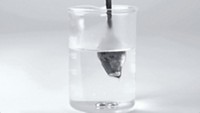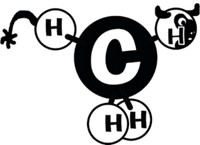Advertisement
Grab your lab coat. Let's get started
Welcome!
Welcome!
Create an account below to get 6 C&EN articles per month, receive newsletters and more - all free.
It seems this is your first time logging in online. Please enter the following information to continue.
As an ACS member you automatically get access to this site. All we need is few more details to create your reading experience.
Not you? Sign in with a different account.
Not you? Sign in with a different account.
ERROR 1
ERROR 1
ERROR 2
ERROR 2
ERROR 2
ERROR 2
ERROR 2
Password and Confirm password must match.
If you have an ACS member number, please enter it here so we can link this account to your membership. (optional)
ERROR 2
ACS values your privacy. By submitting your information, you are gaining access to C&EN and subscribing to our weekly newsletter. We use the information you provide to make your reading experience better, and we will never sell your data to third party members.
Education
Newscripts
The Daring World Of Old-school Science
by Alexander H. Tullo
April 11, 2011
| A version of this story appeared in
Volume 89, Issue 15

I recently bought a book at a yard sale on Staten Island for 50 cents that I’m pretty sure MacGyver read as a kid.
I often put together scientific demonstrations for my seven-year-old daughter, so the book, “700 SCIENCE EXPERIMENTS FOR EVERYONE” (Doubleday, 1962), seemed like a good source for new ideas.
Compiled by the United Nations Educational, Scientific & Cultural Organization (UNESCO), the book has a foreword written by Gerald L. Wendt, who I found out has a very rich biography. He was an instructor at the University of Chicago, dean of the school of chemistry and physics at Pennsylvania State College (now University), director of science and education for the 1939–40 New York World’s Fair, and chief of science education at UNESCO. In addition, he wrote many books and was editor of ACS’s Chemical Reviews from 1930 to 1938. He even had bylines in Industrial & Engineering Chemistry, News Edition, the predecessor of this very magazine, in the 1920s.
UNESCO’s goal in putting out “700 Science Experiments” was to make science accessible with instructions about how to perform experiments using improvised materials. UNESCO had earlier published a similar guide under the less uplifting title “Suggestions for Science Teachers in Devastated Countries.”
“If it is to be learned effectively science must be experienced,” Wendt writes. “It must be learned and not learned about.” He adds that “performing experiments and learning to make close observations require special facilities, and these are lacking in many parts of the world, especially at the elementary and early secondary levels.”
True to its promise, the book suggests fashioning flasks and beakers out of old light bulbs and bending wire hangers into test tube holders. “A plant pot with a plug of cotton wool in the bottom and a layer of sand a few inches deep makes a satisfactory filter for many purposes,” it instructs.
I was struck by the sheer volume, complexity, and elegance of the experiments in the book. I’m not sure that a teacher or a child could exhaust all the suggestions. Some are relatively simple, such as making a mercury barometer or a sundial. But it also gives instructions on constructing a “simple telephone transmitter” and “a cigar box telegraph and key.”
There were plenty of suggestions from the world of chemistry, too, such as making simple electrical cells with a “shallow meat jar,” or generating oxygen by reacting hydrogen peroxide with manganese dioxide or baking soda. It even describes a setup for water electrolysis using “the gold points from two old fountain pens” as electrodes. Soap can help the resultant hydrogen form bubbles. “You can have a lot of fun trying to light the bubbles by placing a lighted candle on the end of a stick to reach them near the ceiling,” it says. Fun until the fire department shows up, anyhow.
The book was clearly written before the expression “don’t try this at home” was coined. It gives a diagram for making a toaster out of Nichrome wire and asbestos board, which is supposed to be plugged into an electrical outlet. Another experiment encourages kids to “get your bicycle going and then apply the brakes quickly. Observe the tendency of your body to stay in motion and pitch you over the handlebars.” The book suggests scaling this experiment up. “You can observe the same effect … when you are riding in a car that is suddenly stopped. You have to brace yourself to keep from sliding off the seat.”
It is a wonder that many kids survived their interest in science during the early 1960s. But the ones who weren’t lost through the windows of Plymouth Belvederes were no doubt enriched by their hands-on experiences.





Join the conversation
Contact the reporter
Submit a Letter to the Editor for publication
Engage with us on Twitter